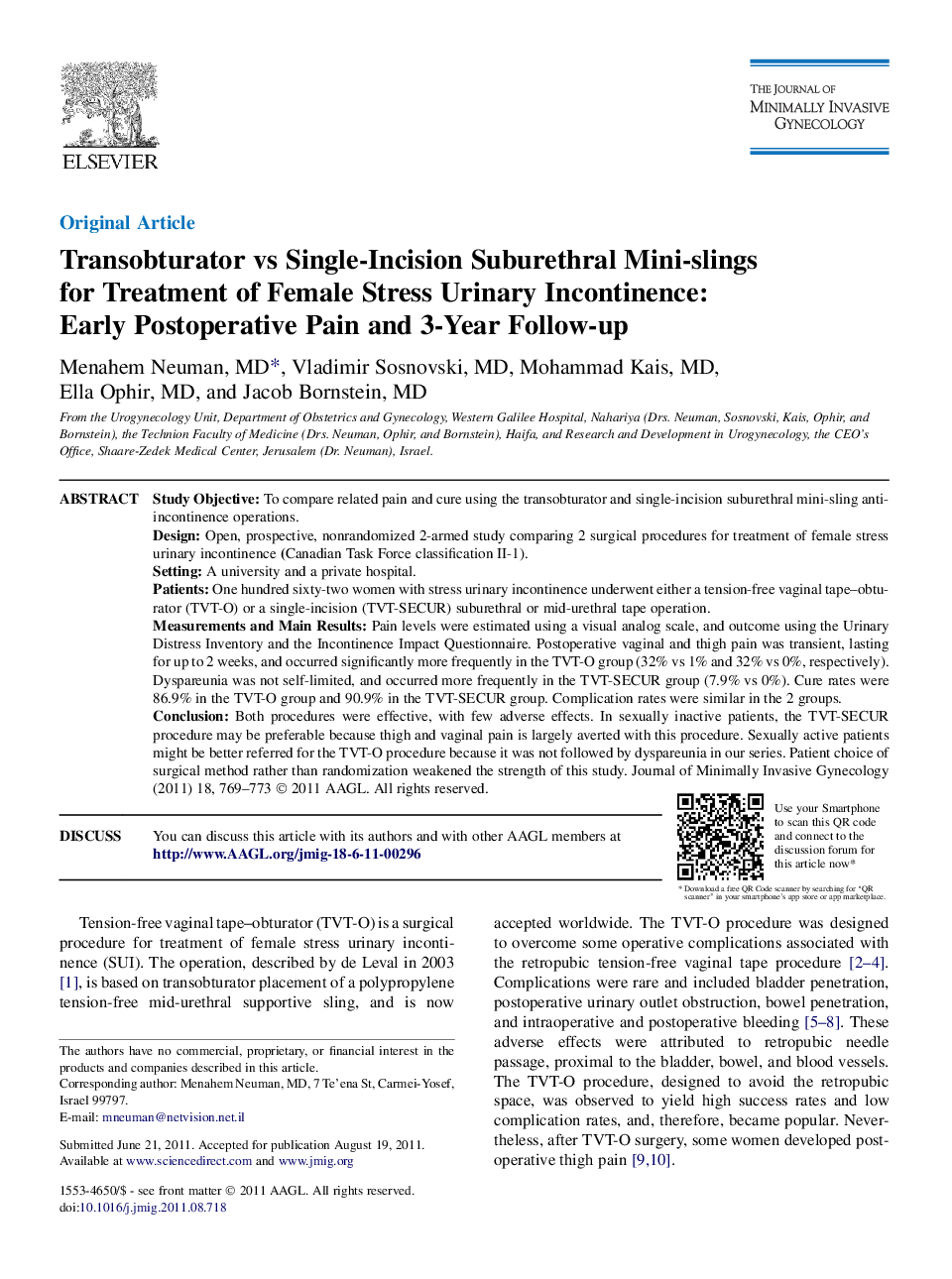| Article ID | Journal | Published Year | Pages | File Type |
|---|---|---|---|---|
| 3962169 | Journal of Minimally Invasive Gynecology | 2011 | 5 Pages |
Study ObjectiveTo compare related pain and cure using the transobturator and single-incision suburethral mini-sling anti-incontinence operations.DesignOpen, prospective, nonrandomized 2-armed study comparing 2 surgical procedures for treatment of female stress urinary incontinence (Canadian Task Force classification II-1).SettingA university and a private hospital.PatientsOne hundred sixty-two women with stress urinary incontinence underwent either a tension-free vaginal tape–obturator (TVT-O) or a single-incision (TVT-SECUR) suburethral or mid-urethral tape operation.Measurements and Main ResultsPain levels were estimated using a visual analog scale, and outcome using the Urinary Distress Inventory and the Incontinence Impact Questionnaire. Postoperative vaginal and thigh pain was transient, lasting for up to 2 weeks, and occurred significantly more frequently in the TVT-O group (32% vs 1% and 32% vs 0%, respectively). Dyspareunia was not self-limited, and occurred more frequently in the TVT-SECUR group (7.9% vs 0%). Cure rates were 86.9% in the TVT-O group and 90.9% in the TVT-SECUR group. Complication rates were similar in the 2 groups.ConclusionBoth procedures were effective, with few adverse effects. In sexually inactive patients, the TVT-SECUR procedure may be preferable because thigh and vaginal pain is largely averted with this procedure. Sexually active patients might be better referred for the TVT-O procedure because it was not followed by dyspareunia in our series. Patient choice of surgical method rather than randomization weakened the strength of this study.
